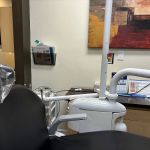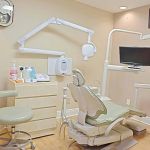Understanding Periodontal Disease: Symptoms, Treatment, and Prevention
- 1. What Is Periodontal Disease?
- 2. Symptoms of Periodontal Disease
- 3. Causes of Periodontal Disease
- 4. Treatment Options for Periodontal Disease
- 5. Advanced Periodontal Disease
- 6. How to Prevent Periodontal Disease
- 7. When to See a Dentist for Periodontal Disease
1. What Is Periodontal Disease?
Periodontal disease, also known as gum disease, is a bacterial infection that affects the tissues surrounding and supporting the teeth. It begins with the accumulation of plaque on the teeth, which, if not removed, hardens into tartar. Over time, this tartar and plaque buildup can irritate the gums, causing inflammation and leading to more serious gum problems.
If left untreated, periodontal disease can progress and cause irreversible damage to the gums, teeth, and even the bone that supports the teeth. The disease is classified into two main stages: gingivitis (the early stage) and periodontitis (the advanced stage).
2. Symptoms of Periodontal Disease
Recognizing the signs of periodontal disease is key to catching it early. Here are some common symptoms:
2.1 Bleeding Gums
One of the first noticeable signs of periodontal disease is gums that bleed when brushing or flossing. This may indicate gingivitis, the earliest stage of gum disease.
2.2 Red, Swollen Gums
Infected gums often become red, swollen, and tender. If your gums look puffy or feel sore, it may be a sign of an infection that requires attention.
2.3 Persistent Bad Breath
Bad breath (halitosis) can result from the bacteria that accumulate in infected pockets between the gums and teeth. If your bad breath doesn't improve with regular brushing, it may be a sign of gum disease.
2.4 Receding Gums
As periodontal disease progresses, the gums may begin to recede, exposing more of the tooth surface or even the tooth root. This can lead to tooth sensitivity and an increased risk of tooth loss.
2.5 Loose Teeth
In advanced stages of periodontal disease, the supporting bone structures around the teeth can be damaged, leading to tooth mobility. If your teeth feel loose, it’s important to seek treatment immediately.
3. Causes of Periodontal Disease
Periodontal disease is primarily caused by the accumulation of plaque and tartar on the teeth. However, several factors can increase the risk of developing gum disease:
3.1 Poor Oral Hygiene
Not brushing and flossing regularly can lead to the buildup of plaque, which eventually hardens into tartar. This tartar can irritate the gums and promote the growth of bacteria that cause gum disease.
3.2 Smoking or Chewing Tobacco
Tobacco use is one of the leading risk factors for gum disease. It weakens the immune system, making it harder for the body to fight infections in the gums.
3.3 Poor Nutrition
A diet lacking in essential nutrients, especially vitamin C, can contribute to the development of gum disease. Vitamin C helps keep gums healthy and resilient to infections.
3.4 Genetics
Some people are genetically predisposed to gum disease. If you have a family history of periodontal disease, you may be more likely to develop it yourself.
3.5 Other Health Conditions
Conditions like diabetes, heart disease, and autoimmune disorders can increase the risk of developing gum disease. People with these conditions should take extra care of their oral hygiene.
4. Treatment Options for Periodontal Disease
Depending on the severity of the periodontal disease, treatment options can range from simple cleanings to surgical procedures. Here are some common treatments:
4.1 Scaling and Root Planing
Scaling and root planing is a non-surgical procedure that removes plaque and tartar from beneath the gumline. The dentist or hygienist uses specialized instruments to clean the teeth and smooth the root surfaces to encourage healing and reattachment of the gums.
4.2 Antibiotics
In some cases, antibiotics are prescribed to help reduce the bacterial infection in the gums. These can be in the form of topical gels or oral medications.
4.3 Gum Surgery
If the disease is severe, surgical options may be necessary. Gum surgery may involve procedures like flap surgery (lifting the gums to clean deep pockets) or soft tissue grafts to restore damaged gum tissue.
5. Advanced Periodontal Disease
When periodontal disease progresses to its advanced stage, it can result in significant damage to the gums and underlying bone. This stage is often characterized by tooth mobility, deep pockets between the teeth and gums, and severe gum recession.
If left untreated, advanced periodontal disease can lead to tooth loss. In this stage, it’s crucial to seek immediate professional care to prevent further complications. Your dentist will work with you to create a treatment plan that may include surgery or other advanced interventions to restore your gum health.
6. How to Prevent Periodontal Disease
Prevention is the best way to avoid the painful and costly effects of periodontal disease. Here are a few preventive measures:
6.1 Brush and Floss Regularly
Brushing your teeth twice a day and flossing at least once a day is essential to remove plaque and food particles from between your teeth and along the gumline.
6.2 Visit Your Dentist Regularly
Regular dental check-ups and professional cleanings are crucial for detecting early signs of gum disease and preventing it from progressing.
6.3 Quit Smoking
If you smoke or use tobacco, quitting is one of the most important steps you can take to protect your gums and teeth from disease.
6.4 Eat a Balanced Diet
Eating a nutritious diet rich in vitamins, especially vitamin C, can help keep your gums healthy and reduce the risk of gum infections.
7. When to See a Dentist for Periodontal Disease
If you notice any symptoms of periodontal disease, it’s essential to see a dentist as soon as possible. Early intervention can help prevent the progression of the disease and avoid severe complications like tooth loss.
For more information on periodontal disease treatment and prevention, visit Dentistry Toothtruth. Our team of experts is dedicated to helping you maintain healthy gums and teeth for a lifetime.







 Affordable Dental at Eastern & Windmill4.0 (287 review)
Affordable Dental at Eastern & Windmill4.0 (287 review) Dr. Hecklin: Family & Cosmetic Dentistry5.0 (316 review)
Dr. Hecklin: Family & Cosmetic Dentistry5.0 (316 review) Dr. Alison Seliger-Schamberg, DMD0.0 (0 review)
Dr. Alison Seliger-Schamberg, DMD0.0 (0 review) Coastal Dental Group4.0 (183 review)
Coastal Dental Group4.0 (183 review) Ridgewood Valley Pediatric Dentistry4.0 (97 review)
Ridgewood Valley Pediatric Dentistry4.0 (97 review) Lone Mountain Dental Las Vegas4.0 (538 review)
Lone Mountain Dental Las Vegas4.0 (538 review) The Importance of Oral Health Education During Pregnancy for a Healthy Pregnancy
The Importance of Oral Health Education During Pregnancy for a Healthy Pregnancy Best Tips for Brushing Your Teeth Properly for Healthy Gums: Essential Techniques for Oral Health
Best Tips for Brushing Your Teeth Properly for Healthy Gums: Essential Techniques for Oral Health Why Skipping Dental Checkups Can Lead to Bigger Oral Health Problems
Why Skipping Dental Checkups Can Lead to Bigger Oral Health Problems Advantages of Porcelain Dental Restorations
Advantages of Porcelain Dental Restorations How Can Diabetes Cause Tooth and Gum Problems? Preventing and Managing Oral Health Issues
How Can Diabetes Cause Tooth and Gum Problems? Preventing and Managing Oral Health Issues Healthy Habits for Promoting Good Oral Health and Hygiene: Tips for a Healthy Smile
Healthy Habits for Promoting Good Oral Health and Hygiene: Tips for a Healthy Smile